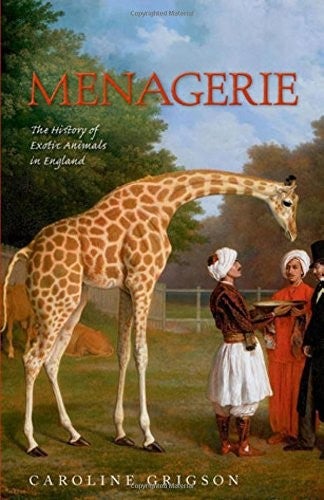Caroline Grigson, Menagerie: The History of Exotic Animals in England: 'Our beastly love affair', book review
In Menagerie, the zoologist Caroline Grigson presents an impressive study of the country’s obsession with exotic animals

On this small island we call home, it is easy to feel a little jaded when it comes to wildlife. There is, of course, a certain charm in our native creatures – our foxes, hedgehogs and much-maligned badgers – but if size matters we undoubtedly pale in comparison to the great bears and elk of North America, the giraffe and hippos of Africa, or the big cats of Asia.
No wonder, then, that the English have a long-held tradition of taking what doesn’t belong to them.
In Menagerie, the zoologist Caroline Grigson presents an impressive study of the country’s obsession with exotic animals. Zoos and safari parks may be a common modern destination, but this comprehensive analysis establishes that our fascination with creatures from far-off lands started long before Longleat or Chester: in fact, we have been marvelling at such live imports since the 12th century.
Grigson begins with King Henry I, who enclosed the park at Woodstock in Oxfordshire and filled it with leopards, camels and lynxes. From there, the focus moves to The Tower of London, where King John established a home for wild beasts which, as the decades passed, included lions, elephants, and a Norwegian bear which swam in the Thames.
Beyond that, we find paid attractions in Piccadilly, ostriches and camels kept in St James’s Park, and travelling shows of varying quality.
Menagerie is full of fascinating and often charming tales of such creatures, often traded for other valuables, gifted to royalty, or purchased for study. The improved access to, or discovery of, new countries opened up a whole new world of wildlife, and the prestige attached to a rare animal accessory turned them into currency.
But while the rich traded peacocks and sent marmosets instead of thank-you notes, the less wealthy clamoured to see them also, paying to stroke a rhino, take tea with a trained chimpanzee or, less innocently, gamble at baiting tournaments.
While alive, these animals provided endless enjoyment and recreation. When dead, Grigson notes, the resulting studies formed early innovations in anatomy and evolutionary theory.
Menagerie is impressively thorough, but it is also old-fashioned in its academic approach, suffering from comparisons to recent, more lively and innovative books concerned with nature.
Grigson’s conclusion is too brief, with little attention to the motivation or ethics behind the collection of such creatures. As a study of a trend that stems back almost 1,000 years, however, it is undeniably and ambitiously comprehensive.
Menagerie: The History of Exotic Animals in England, by Caroline Grigson. OUP £25
Join our commenting forum
Join thought-provoking conversations, follow other Independent readers and see their replies
Comments